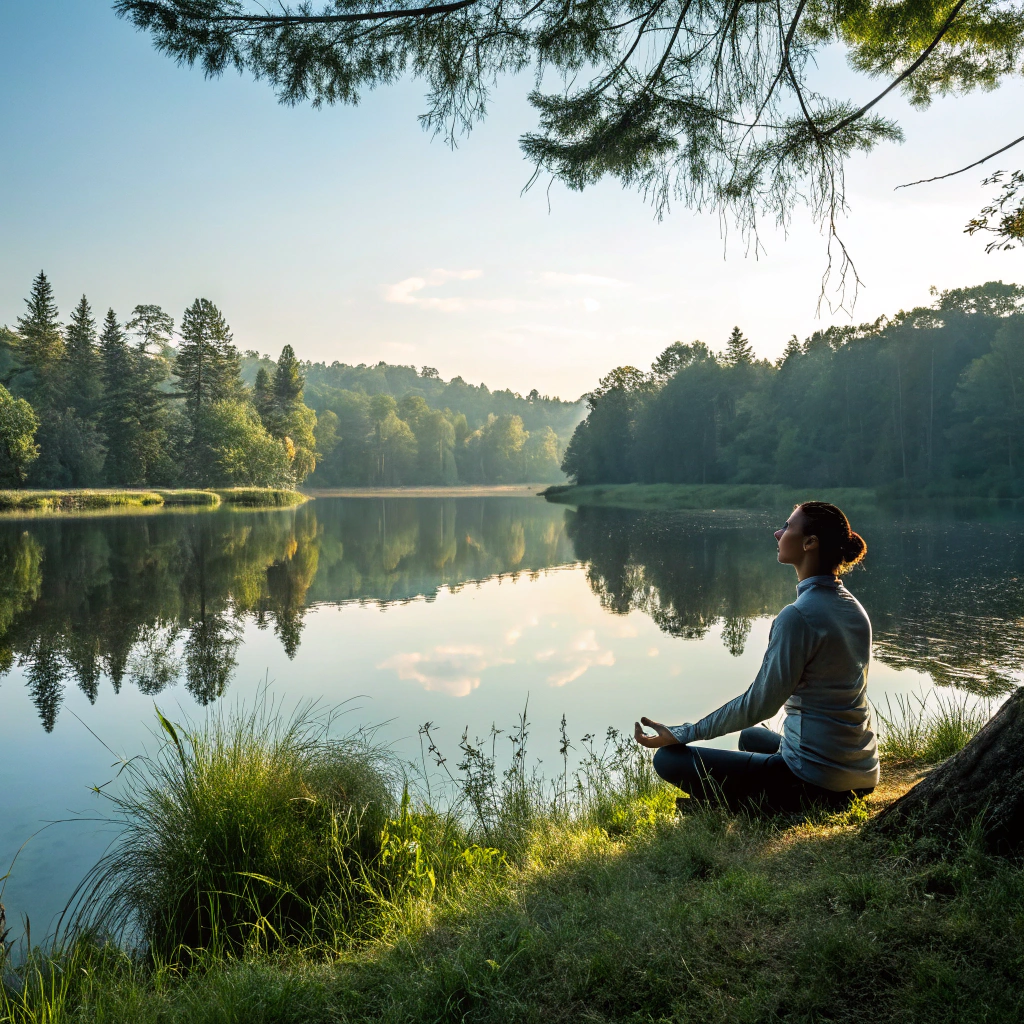Best Relaxation Techniques for Stressful Days
In today’s fast-paced world, stress has become almost unavoidable. From tight work schedules to endless notifications and personal responsibilities, many people feel overwhelmed on a daily basis. While some stress can be motivating, too much of it takes a toll on both physical and mental well-being. This makes learning effective relaxation techniques more important than ever—not as a luxury, but as a necessity for overall health.
This article explores the best relaxation techniques for stressful days, providing practical methods supported by both science and tradition. These self-care practices can help you restore balance, reduce anxiety, and improve resilience in the face of daily challenges.
1. Deep Breathing: Calming the Nervous System
How It Works
Deep, controlled breathing activates the parasympathetic nervous system, which slows heart rate and reduces stress hormones.
Benefits
- Lowers blood pressure.
- Promotes mental clarity.
- Provides instant stress relief.
Practical Tips
Try the 4-7-8 technique: inhale for 4 seconds, hold for 7 seconds, exhale slowly for 8 seconds. Repeat 4–5 times whenever stress peaks.
2. Meditation and Mindfulness: Training the Mind
How It Works
Meditation involves focusing attention and letting go of racing thoughts. Mindfulness, specifically, encourages awareness of the present moment without judgment.
Benefits
- Reduces anxiety and depression symptoms.
- Improves emotional regulation.
- Enhances focus and productivity.
Practical Tips
Start with 5 minutes a day using guided meditation apps. Gradually increase to 15–20 minutes for deeper benefits.
3. Yoga: Movement and Mindfulness Combined
How It Works
Yoga combines physical postures, controlled breathing, and meditation to relax both body and mind.
Benefits
- Releases muscle tension.
- Improves flexibility and circulation.
- Balances mood and promotes inner peace.
Practical Tips
Begin with gentle styles like Hatha or Yin Yoga. Even 10–15 minutes daily can make a difference.
4. Progressive Muscle Relaxation (PMR): Releasing Tension
How It Works
PMR involves tensing and then relaxing different muscle groups to increase awareness of physical tension.
Benefits
- Reduces headaches and body pain linked to stress.
- Improves sleep quality.
- Creates a sense of deep relaxation.
Practical Tips
Lie down in a quiet space. Starting from your feet, tense each muscle group for 5 seconds, then release for 20 seconds. Work your way up to your head.
5. Aromatherapy: Healing Through Scents
How It Works
Essential oils stimulate areas of the brain linked to emotion and relaxation, particularly the limbic system.
Benefits
- Lavender reduces anxiety and improves sleep.
- Peppermint boosts alertness.
- Chamomile promotes calm.
Practical Tips
Use a diffuser, add a few drops to bathwater, or mix essential oils with carrier oils for massage.
6. Journaling: Writing Away Stress
How It Works
Writing helps organize thoughts and process emotions, reducing mental clutter.
Benefits
- Improves emotional clarity.
- Helps identify stress triggers.
- Encourages problem-solving.
Practical Tips
Spend 10 minutes daily writing about your feelings or things you’re grateful for. This simple habit can shift your mindset.
7. Listening to Calming Music: The Sound of Relaxation
How It Works
Music influences brain waves, lowering stress hormone levels and creating a soothing effect.
Benefits
- Lowers heart rate.
- Enhances mood.
- Aids focus during work or study.
Practical Tips
Create a playlist of calming instrumental tracks or nature sounds to listen to during stressful moments.
8. Spending Time in Nature: The Power of Green Spaces
How It Works
Nature exposure reduces cortisol levels and boosts endorphins. Even brief interactions with natural settings provide measurable stress relief.
Benefits
- Improves mood and energy levels.
- Enhances creativity.
- Promotes mindfulness.
Practical Tips
Take short walks in a park, sit near water, or practice “forest bathing” by spending quiet time among trees.
9. Digital Detox: Disconnect to Reconnect
How It Works
Reducing screen time lowers overstimulation and mental fatigue caused by constant notifications and information overload.
Benefits
- Improves sleep quality.
- Enhances focus and productivity.
- Reduces anxiety tied to social media.
Practical Tips
Set aside at least one “tech-free” hour before bedtime. Consider a full day off digital devices once a week.
10. Warm Baths: Soothing Body and Mind
How It Works
Warm water relaxes muscles, improves circulation, and encourages the release of endorphins.
Benefits
- Relieves tension headaches and muscle soreness.
- Promotes restful sleep.
- Provides a calming ritual for winding down.
Practical Tips
Enhance baths with Epsom salts or calming essential oils like lavender for added relaxation.
Linking Relaxation Techniques to Broader Wellness
These stress relief methods are powerful tools for daily stress management, but they work best when integrated into a consistent self-care lifestyle. Incorporating deep breathing, yoga, or journaling into your daily routine can significantly improve both mental and physical health.
👉 While these techniques can be powerful for day-to-day stress relief, understanding the science behind relaxation provides even deeper insight. For a comprehensive look at how self-care impacts health and happiness, explore our main article: The Science of Relaxation: How Self-Care Improves Health and Happiness.
Conclusion
Stress may be a part of modern life, but it doesn’t have to control your well-being. From deep breathing and meditation to digital detoxes and warm baths, these best relaxation techniques provide accessible, effective ways to find balance on even the most stressful days.
Experiment with different methods and build a toolkit of self-care relaxation tips that work for your lifestyle. By practicing these techniques regularly, you’ll not only manage stress better but also cultivate greater resilience, calm, and long-term wellness.

